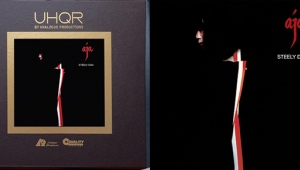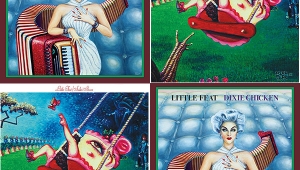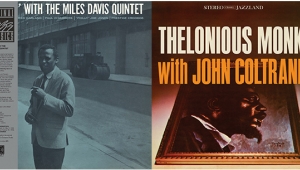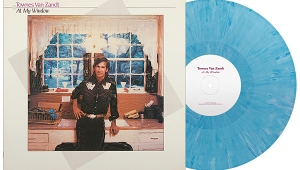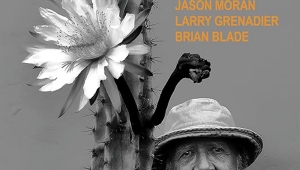| Columns Retired Columns & Blogs |
Revinylization #52: Nina Simone's Seminal Wild is the Wind

By all accounts, Eunice Kathleen Waymon, aka Nina Simone, who passed in 2003, was a troubled person and a brilliant artist. Why she was not more acclaimed during her lifetime is a question several recent film projects have tried to answer. Did her fierce stand on civil rights lose her fans? Or was it, as the films have implied, a case of self-sabotage driven by mental illness? Whatever the answer, her inimitable work continues to resonate with ever more force and depth.
Simone was a gifted, aspiring classical pianist who graduated as valedictorian from an integrated private high school and attended Juilliard for a year on scholarship, using her time there to prepare for the entrance exam at the Curtis Institute, from which she was rejected. (Days before her death, Simone would learn that Curtis intended to award her an honorary degree.) Her rejection from Curtis pushed her into jazz. In the mid-1960s, she underwent a radical change in her music and personal beliefs.
Up to that point, she'd played the music business game and stayed on the safe side, trying to widen her appeal with a mix of standards, bluesy numbers, and also—hesitantly—originals. But the murders of Emmett Till and Medgar Evers and the stirring of the Civil Rights movement convinced her of the righteousness of the cause, and she became a leading musical voice in the struggle.
Upon its release in 1964, on the album Nina Simone in Concert, "Mississippi Goddam" became a civil rights rallying cry. Banned many places in the South, the song introduced an element of righteous anger into Simone's live appearances. Some fans were put off by her new activism, while that same attribute drew others to her music for the first time. Simone was acutely aware that she was not thought of or spoken about with the same affection as, for example, Ella Fitzgerald, and her recorded legacy from the mid-1960s onward is an unwieldy but ahead-of-its-time mix of committed, well-aimed message songs, love songs, Beatles covers, and Tin Pan Alley standards. One of the first and still best albums that displays this mix in a near-perfect blend is 1966's Wild Is the Wind.
A mix of tracks left over from sessions Philips recorded in 1964 and 1965, Wild Is the Wind has been reissued on 180gm vinyl by Universal Music and Acoustic Sounds. Remastered by Ryan Smith at Sterling Sound and plated and pressed at QRP in Salina, Kansas, the record sounds warm and evocative, capturing the nuances of Simone's complex vocal powers. Throughout, the sonic focus is almost entirely on her voice and piano. The players heard on the original issue as well as this reissue are not listed—this was common at the time—but according to ninasimone.com, the band was guitarist Rudy Stevenson, bassist Lisle Atkinson, and drummer Bobby Hamilton. (Stevenson is also credited on flute.)
Oddly coherent despite the jumble of tracks, the album opens with "I Love Your Lovin' Ways," which shows that among her many gifts, Simone was an enthusiastic and credible blues singer. Further along is her unforgettable version of the lovely "Lilac Wine." Covered again by Jeff Buckley in 1994, this solemn hymn to love, written by James Shelton, gathers a triumphant roll here thanks to Simone's voice and piano. In her softest, most expressive voice, she lingers on the dreamy lyrics—"I made wine from the lilac tree/Put my heart in its recipe/Makes me see what I want to see/And be what I want to be."
Later, during "That's All I Ask," she stretches her vocals, allowing her tight vibrato to kick in. She switches into a forceful growl that occasionally soars in Van McCoy's "Break Down and Let It All Out." (That's the same McCoy who wrote and recorded the 1975 disco hit, "The Hustle.") A light rhumba beat swirls behind "Why Keep on Breaking My Heart," as Simone becomes the jilted lover, a persona she often inhabited and made indelibly her own. The title track, by the great film-soundtrack composer Dimitri Tiomkin (Red River, High Noon, The Old Man and the Sea), receives a seven-minute performance that drags and may be the album's least successful track. Her expressive vocal verve, expertly modulating between emphasis and solemnity, makes her version of the traditional "Black Is the Color of My True Love's Hair" one of her best-known recordings.
The album closes with a pair of tracks with the word "lose" in the title. The process of losing something, be it love or self-respect, is a foundational theme in Simone's emotional and artistic worlds. Toward the end of her emotional performance of "If I Should Lose You," which ends with grand glissandos leading to playful piano chords, she tightens her vibrato to the point where it's not clear if she's singing or crying.
The album's masterpiece, and the only Simone original on Wild Is the Wind, is "Four Women," in which she follows a quartet of women from slavery to present time. Singing in the characters of Aunt Sarah, Saffronia, Sweet Thing, and Peaches, she details what they were called and how they were treated. While Simone's voice could be a very effective weapon when she so chose, here she sings expressively but without overwhelming emotion until the final verse, when, as Peaches, she digs into lines she clearly relates to on a personal level. "My skin is brown/My manner is tough/I'll kill the first mother I see/My life has been too rough/I'm awfully bitter these days/Because my parents were slaves." In a jarring juxtaposition that defines the emotional spectrum of her work in the mid-'60s, that justifiable vehemence is followed by a slow and soft rendition of the pleading love cry, "What More Can I Say?"
Filled with representations of Simone's many-faceted personality, Wild Is the Wind, available again in a high-quality vinyl pressing with remastered sound, is a marvelously diverse portrait of an artist forever in transition.
- Log in or register to post comments



